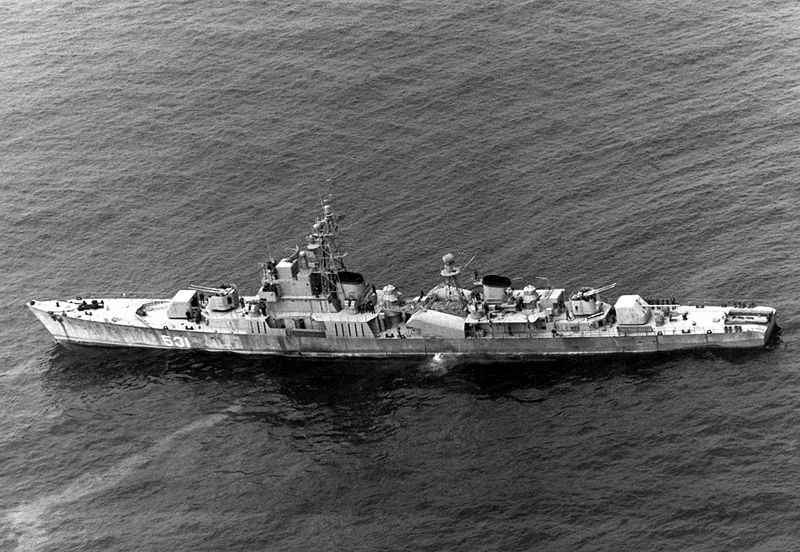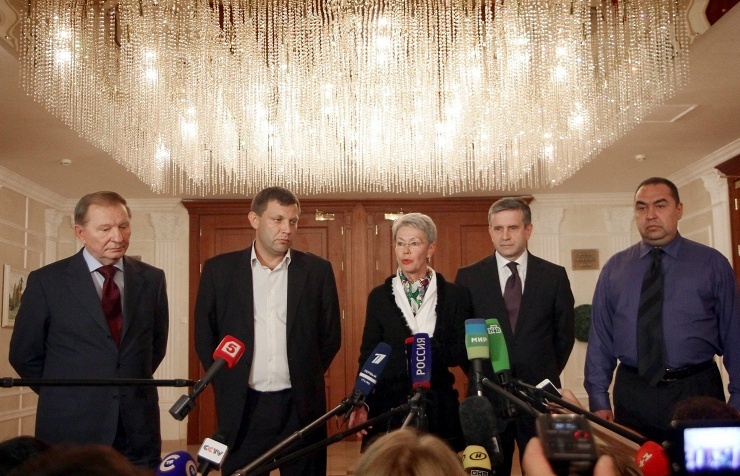Until recently, the conventional thinking among military planners has been that the Korean People’s Navy, North Korea’s maritime force, is in a state of severe decline and can at best be considered a ‘brown water navy’. That is, North Korea is capable of patrolling waters up to 50 nautical miles from its coast but cannot attempt operations of greater ambition. However, recent satellite imagery suggests a re-assessment of North Korea’s maritime power may be in order.
In May 2014, analysts were alarmed when two helicopter frigates were detected berthed at a North Korean shipyard. Based on this imagery, the frigates appear to be capable of carrying a helicopter and may be armed with both anti-ship and anti-submarine weapons systems. As such, these two new frigates could be intended to counter South Korea’s submarine fleet and to deter the encroachment of fishing vessels from other regional powers, thus largely fulfilling a defensive role. Nonetheless, these frigates would constitute a considerable expansion in the maritime power of the Korean People’s Navy, especially given that it has largely consisted of missile boats and small submersibles for special operations units the past few decades.

In fact, it is surprising for many analysts that North Korea’s shipbuilding industry has the ability to produce vessels of the size detected in the recent satellite imagery. In the 1970s, North Korea unveiled the Najin-class corvette, which bore a striking resemblance to the Kola-class frigate produced by the Soviet Union during the 1950s. Only four of these Soviet inspired corvettes were produced by North Korea and half of these have reportedly been decommissioned and troubles with their jury-rigged ship-to-ship missile launchers suggest that the two remaining Najin-class corvettes might be a greater danger to themselves than to any potential enemy combatants.
Aside from the two mystery frigates and the remaining Najin-class corvettes, the only vessel to be turned out by North Korean shipyards greater than that of a patrol boat is the Sariwon-class corvette. However, while the shipbuilding indeed took place in North Korea, the design of the Sariwon-class did not. Rather, these corvettes are based on the Tral-class minesweeper deployed by the Soviet Union during the Second World War, tweaked slightly to eschew mine-detecting and disposal equipment in favour of several 57mm cannons. Produced by North Korea’s shipyards in the 1960s, all five corvettes are still in operation, though their combat effectiveness at this point is questionable.
Prior to May 2014, the newest vessel in the Korean People’s Navy was, to the knowledge of the international community, roughly 40 years old. The Najin-class corvette seemed like a one-time deal, the highest and only achievement of North Korea’s shipyards. The unexpected introduction of two helicopter frigates suggests two possibilities. The international community may be underestimating North Korea’s military and industrial capabilities, suggesting North Korea requires deeper scrutiny from NATO and other entities concerned with international security. It is also possible that North Korea may be successfully leveraging its connections with international organized crime, necessitating stricter sanctions and surveillance of the country.

In 2003, satellite imagery detected the delivery of an empty hull to one of North Korea’s harbours. This hull had once belonged to one of the Soviet Union’s Krivak-class frigates. The original Krivak-class was introduced in the 1970s but was phased out by the 1990s, though the design remains popular to this day. The Indian Navy’s Talwar-class frigates are a modernized version of the Krivak-class, the most recent of which was commissioned for duty in June 2013. The empty hull delivered to North Korea, however, is suspected to have been a purchase from a Russian scrap dealer nominally to be used for scrap metal. Satellite imagery obtained in 2007 indicated no change in the condition of the empty hull, though it disappeared from the harbour sometime later. It is possible, though unlikely, that the gutted Krivak-class and another like it were refurbished as the recently detected helicopter frigates. More detailed images will be necessary to adequately determine if the new frigates are an entirely indigenous design or if they were built on the hull of another class of vessel.
Regardless, this does not overly upset the balance of power between the two Koreas. Even if the two mystery frigates are fully completed and combat effective, this would only bring North Korea’s maritime forces up to two frigates and six corvettes total, patrol boats and missile boats excluded. By contrast, South Korea currently has, in service, 12 destroyers, 10 frigates, 21 corvettes, 12 submarines, and an amphibious assault ship, all of which are based on the latest technology. The top concern for the international community should be preventing North Korea from acquiring the means to narrow that gap.




